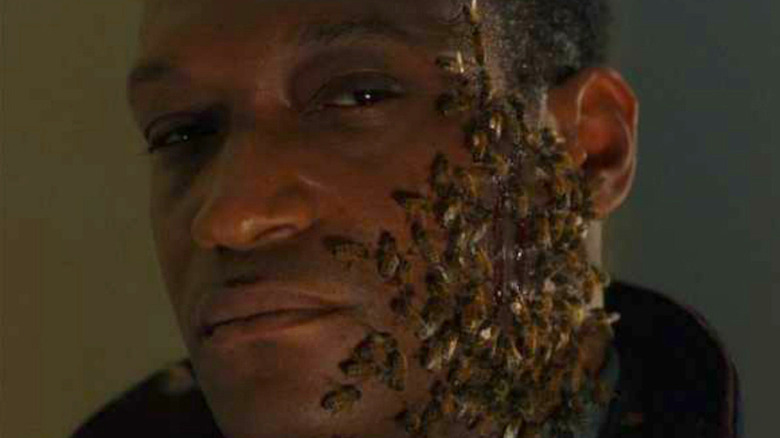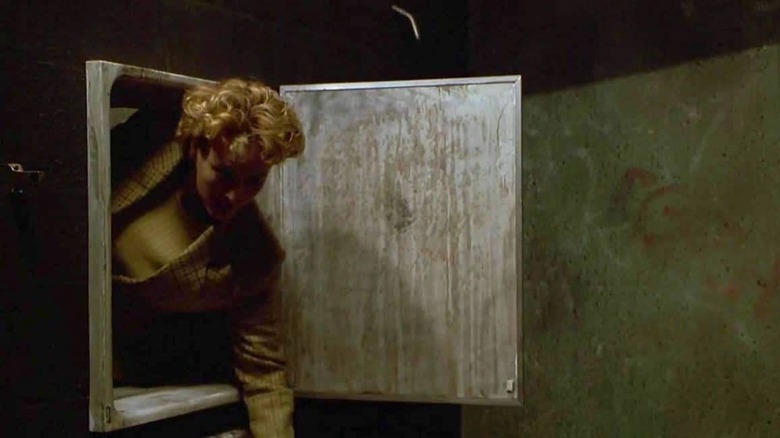The Terrifying Real-Life Inspiration Behind Candyman
It's been almost 30 years since "Candyman" first terrorized moviegoers across the globe, and it's a safe bet most of those who bought the ticket and took that nightmarish ride are still afraid to look into a mirror and say the film's name five times. There's good reason for that as Tony Todd's hook-handed, bee-bearded slasher was truly one of the decade's most menacing killers, with the film itself taking the urban legend horror genre to bone-chilling new places. It did so while also acknowledging grave social and racial injustices past and present, a fact that's helped separate "Candyman" from many of its more widely recognized genre brethren over the years, and all but ensured its socially conscious legacy will endure for years to come.
Adapted and directed by Bernard Rose from a short story by horror maestro Clive Barker ("Hellraiser"), "Candyman" follows a grad student (Virginia Madsen) who sets out to debunk a sinister urban legend only to find said legend realer than she ever could've imagined. The film's fictional facts aside, there's more legitimate historical bite to "Candyman" than we might've known. And it turns out the Candyman wasn't the only thing one needed to fear emerging from their bathroom window, as there's a legit factual basis for the film's creepy "behind the medicine cabinet" twist.
Medicine cabinet murders were apparently a very real thing in Chicago's housing projects
That twist found Madsen's student visiting Chicago's infamous Cabrini-Green housing project. After meeting with Anne-Marie McCoy (the neighbor of the Candyman's most recent victim Ruthie Jean), she explores the crime scene herself and discovers a passageway hidden behind the woman's bathroom medicine cabinet. That shocking revelation leads her to suspect Ruthie Jean was killed by an intruder from within the building and not some supernatural entity.
In a truly disturbing turn of events, the "behind the medicine cabinet" twist is very likely based on the horrific real-life murder of Ruthie Mae McCoy, who Rose all but names directly via the aforementioned Cabrini Green residents. As covered by Steve Bogira in a pair of Chicago Reader articles from 1987 and 1990 respectively, McCoy's shooting death in her Abbott Homes apartment initially had police scratching their heads as there was no clear evidence of a break-in. However, after taking into account McCoy's 911 call where she claimed she'd heard people in her walls, detectives did some poking around and soon discovered an easily accessible pipe-way behind her bathroom medicine cabinet, determining it to be the point of entry.
There are more tragic details to the story of Ruthie Mae McCoy's murder, of course, in both of those Reader pieces. But the surface facts of the case are terrifying enough, and they provide new depth to the horrors of one of "Candyman's" most unsettling moments.

